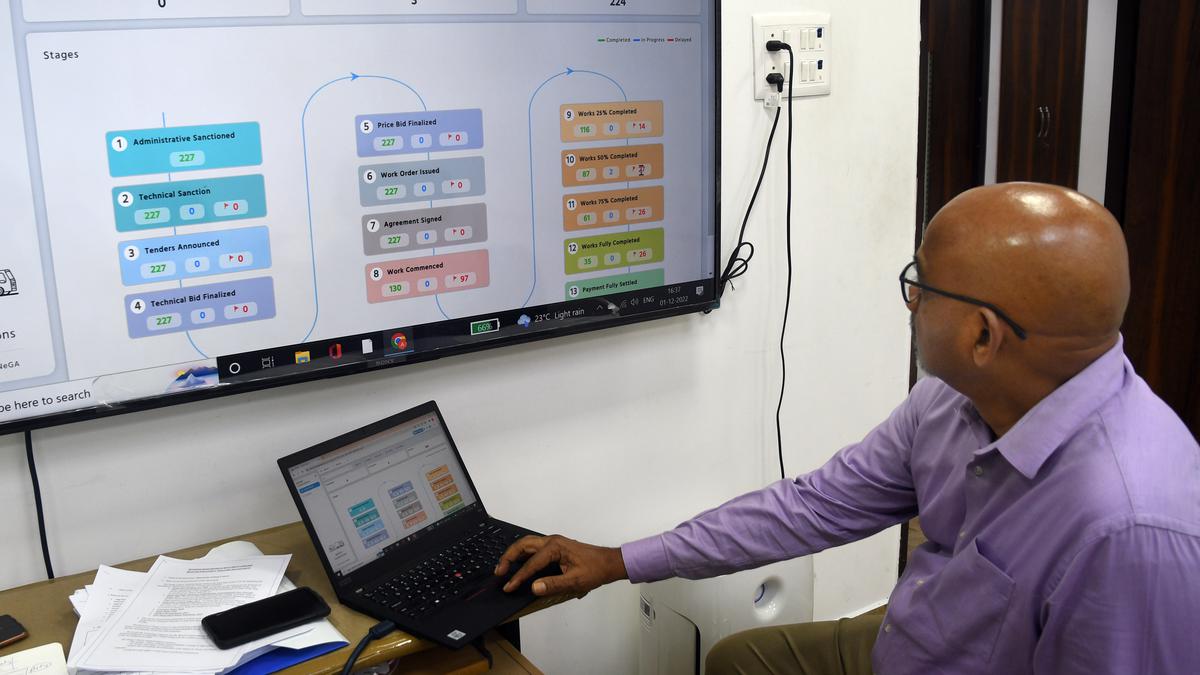
A tool to keep track of governance at the macro and micro-level
The Hindu
The Chief Minister’s Dashboard Monitoring System is being designed by the Tamil Nadu e-Governance Agency to cover a wide gamut of activities of various departments of the government across Tamil Nadu; it will give all the information on various projects and keep tabs on measurable deliverables. As of now, 64 dashboards are live, and this number is expected to go up to 100 by the end of this month, an official says
The exterior of the P.T. Lee Chengalvarayan Trust Building on Anna Salai, Chennai, may be misleading. It does not give off any hint of the quality and significance of the work being done there for nearly a year now. The work, which is no less exciting to at least two dozen young techies, deals with the establishment of the Chief Minister’s Dashboard Monitoring System that is being designed to cover a wide gamut of activities of governance in Tamil Nadu.
Employed by the Tamil Nadu e-Governance Agency (TNeGA), these techies are associated with the decision support system project, which enables Chief Minister M.K. Stalin to observe, closely and directly, the implementation of a host of schemes and projects without anyone’s help. The CM’s Dashboard, in turn, encompasses several dashboards created for various departments of the government.
“Currently, 64 dashboards are live. By the end of December, this will go up to 100,” says a senior official, who handles the execution of the dashboard project, adding that the Chief Minister has been involved in the project from the stage of conception. “But for his continued support and guidance, this project would not have progressed this much,” the official observes.
Eventually, all the 38 departments and 220 directorates will be brought under the fold of the monitoring system. The official hopes to complete the task in four months.
The government has entrusted the responsibility of overseeing the execution of the dashboard project with a veteran administrator, P.W.C. Davidar, who has been designated as Advisor (Digital and Simplified Governance).
As of now, the functions of departments, including Agriculture, Revenue, Civil Supplies, Police and Industries, have been covered under the new monitoring system, which was launched in December last year. While providing the big picture of a given department, the tool gives the exact information on any specific project or work of the department.
“So, you get to know both macro and micro-level situations, a scenario not commonly available in conventional monitoring systems,” another official says, adding that performance now determines the slots of districts. For example, one can have a look at the status of the total number of projects being undertaken by municipalities all over the State. At the same time, one can also ascertain the details of any specific local body, say, the Kodaikanal Municipality in Dindigul district. As for the status of the works, the monitoring system naturally flags delays in execution: at what stage of the work the delay occurs, the number of days of overrun and even, the delay in the payment of bills after the completion.













